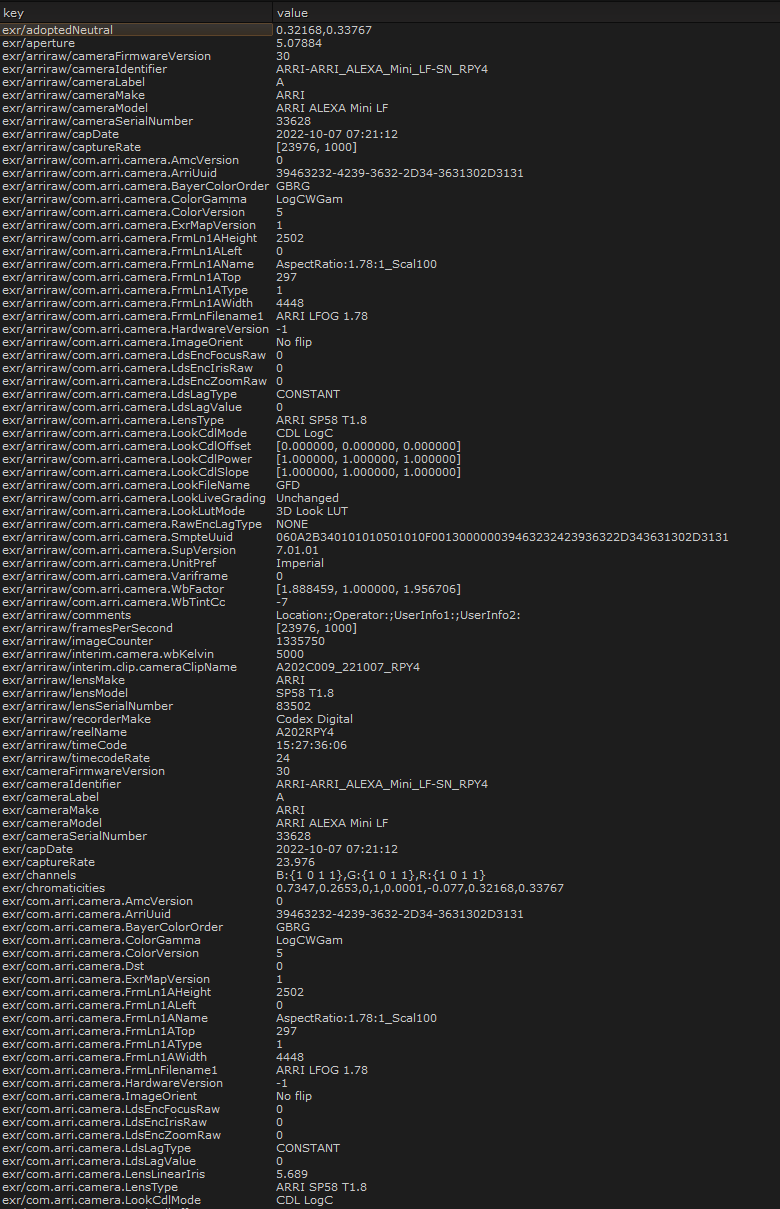I’m trying to work on the nuke comp, but it’s metadata information for that plate. The color space between viewing and working is ap0 ap1, so should I set the input color to aces-cg(ap1) or set it to aces-2065(ap0) on the nuke read node?
In Nuke the read node input transform is set to the color space that the file is in and then will convert from that color space into the working space. An EXR of film footage should be in AP0.
You also want to return it in the same color space it was received in. So the Output Transform on the write node should also be AP0. If you are reading in with a color space, and writing out the same, that essentially makes it a noop. So you kind of can’t go wrong
Technically Derek is right that it should be AP0 and that is what the ACES spec says all files should be written in. In practicality/reality you should really talk to the vendor that gave you the files. We get EXR in AP1 all the time. There is nothing preventing someone from writing it in a different color primaries.
Normally, 3d rendering data comes in ap1 and film footage exr data comes in ap0 and we can input it in the input color of nuke read node and convert it into working color space and continue working in the same color space, right?
I agree with Deke about theory vs practical approach to externally-provided input colorimetry.
When I was consulting for Foundry, I suggested a checkbox to be added in the Write node to “force” ACES-compliant formats only. Checking it would disable all strictly out-of-spec options and basically leave less-experienced users to pick the only two available options, via the file-format pull-down menu:
- exr > SMPTE 2065-4 compliant OpenEXR frame(s), i.e. AP0 colorimetry, uncompressed, with timecode metadata, …;
- mxf > SMPTE 2065-5 compliant MXF file (uncompressed AP0, etc.), i.e. wrapping a 2065-4 compliant EXR sequence.
As far as I know, though, no such feature has been yet implemented. Neither in Nuke, nor in other vendor products (Baselight, DaVinci Resolve, Clipster, Flame, etc.), That would have prevented people from writing files that are not strictly compliant with ACES specs.
If that feature were consistently added by vendors, I believe most colorimetry hassles would go away in a few months of ACES-based production. That is why we originally designed specific SMPTE 2065-4/5 standards for.
Yes, that is what is expected.
@Deke_Kincaid makes a good point though that it is always good to communicate. That’s the purpose of a VFX Round Trip to ensure that everything is working according to the specifications decided on by the production and imaging teams. The following video from Netflix Studios provides a nice overview of the process and why it’s important:
That already exists as @Derek mentioned, but technically that requires no compression, which is no-bueno for most people.




